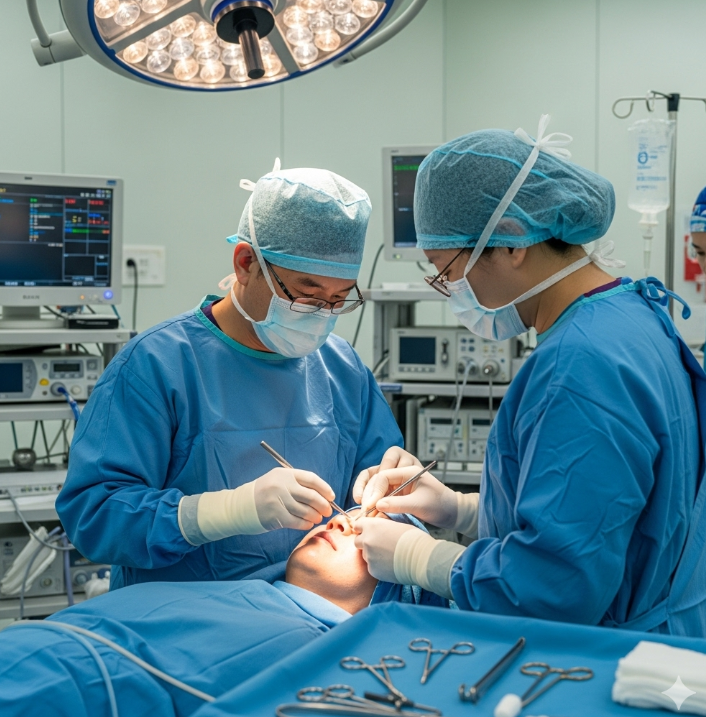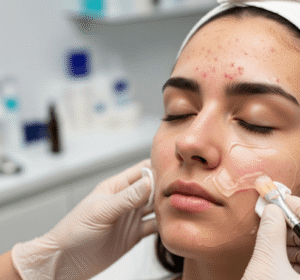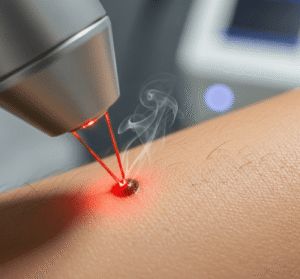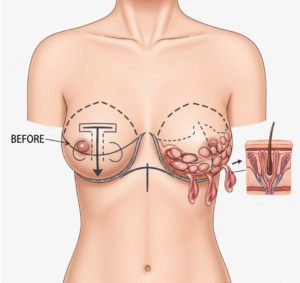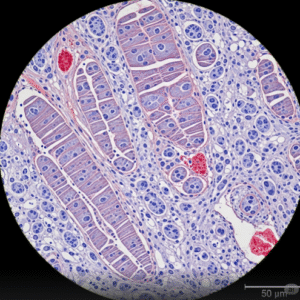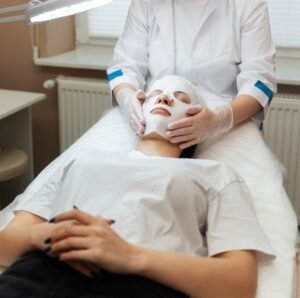What It Is
Revision cleft lip rhinoplasty is a specialized surgical procedure to correct nasal deformities associated with cleft lip, often performed after an initial cleft lip repair. Patients with cleft lip commonly have asymmetric nostrils, collapsed nasal cartilage, septal deviation, or flattened nasal tip due to congenital differences and scarring from previous surgeries.
This revision procedure reshapes the nasal framework, restores symmetry, and improves both appearance and breathing function. In Korea, revision cleft rhinoplasty is performed by surgeons experienced in both aesthetic and reconstructive surgery, often using rib, ear, or septal cartilage grafts with advanced scar-minimization techniques.
Why It’s Done
Patients undergo revision cleft lip rhinoplasty because:
- They have asymmetry of the nose after cleft lip repair.
- Breathing difficulties are caused by septal deviation or nasal valve collapse.
- They want to improve nasal contour, projection, and symmetry.
- Previous surgeries left visible scars or irregularities.
Good candidates include:
- Adolescents and adults with cleft-related nasal deformities.
- Patients in good overall health who have completed facial growth (usually after 15–16 years old).
- Individuals seeking both functional breathing improvement and cosmetic refinement.
Alternatives
- Non-surgical fillers (liquid rhinoplasty): Temporary option for minor contour irregularities.
- Primary rhinoplasty at cleft lip repair: Sometimes done in infancy, but revision is usually necessary later.
- Septoplasty alone: For patients with only airway obstruction but minimal cosmetic concerns.
Preparation
Before revision cleft lip rhinoplasty in Korea, patients will:
- Have CT scans, nasal endoscopy, and 3D imaging for functional and aesthetic planning.
- Undergo clinical evaluation with both a plastic surgeon and ENT specialist.
- Stop smoking and alcohol at least 4 weeks prior to surgery.
- Avoid blood-thinning medications and supplements.
- Discuss expectations and possible staged surgeries for best results.
How It’s Done
- Anesthesia: General anesthesia is typically used.
- Approach: An open rhinoplasty technique (incision at the columella) is common for best visibility.
- Framework reconstruction: Cartilage grafts (from septum, ear, or rib) are used to restore nasal support and projection.
- Septal correction: Deviated septum and airway issues are repaired.
- Scar revision: Previous cleft-related scars are revised or softened.
- Closure: Fine sutures are placed, and nasal splints may be applied.
- Duration: 3–5 hours depending on complexity.
Recovery
- First week: Swelling, bruising, and nasal congestion are common. Splints and sutures are removed after 7–10 days.
- Return to activities: Light activities after 1–2 weeks; avoid strenuous exercise for 4–6 weeks.
- Healing: Swelling gradually improves over months. Final results may take up to 12 months.
- Final results: More symmetrical, natural-looking nose with improved breathing.
Possible Complications
- Persistent asymmetry or irregularities.
- Graft absorption or warping (rare with modern techniques).
- Breathing difficulties if nasal valves collapse.
- Infection or scar hypertrophy.
- Need for secondary touch-up procedures.
Treatment Options in Korea
Diagnosis
Korean surgeons use 3D facial scans, nasal endoscopy, and CT imaging to evaluate nasal deformity and airway function before surgery.
Medical Treatments
- Nasal sprays or medications for airway obstruction in mild cases.
- Scar therapy (silicone gels or lasers) for minor aesthetic refinement.
Surgical or Advanced Therapies
- Open revision cleft rhinoplasty with cartilage grafting.
- Septorhinoplasty to combine functional and cosmetic correction.
- Alar base reduction or tip refinement for symmetry.
- Comprehensive cleft revision combining lip and nose correction in one surgery.
Rehabilitation and Support
- Postoperative care with regular follow-ups.
- Scar management with silicone, massage, or fractional laser.
- Long-term orthodontic and speech therapy support if part of a broader cleft sequence.
- International patients benefit from Korea’s multidisciplinary cleft centers, advanced grafting techniques, and aesthetic-focused aftercare programs.

